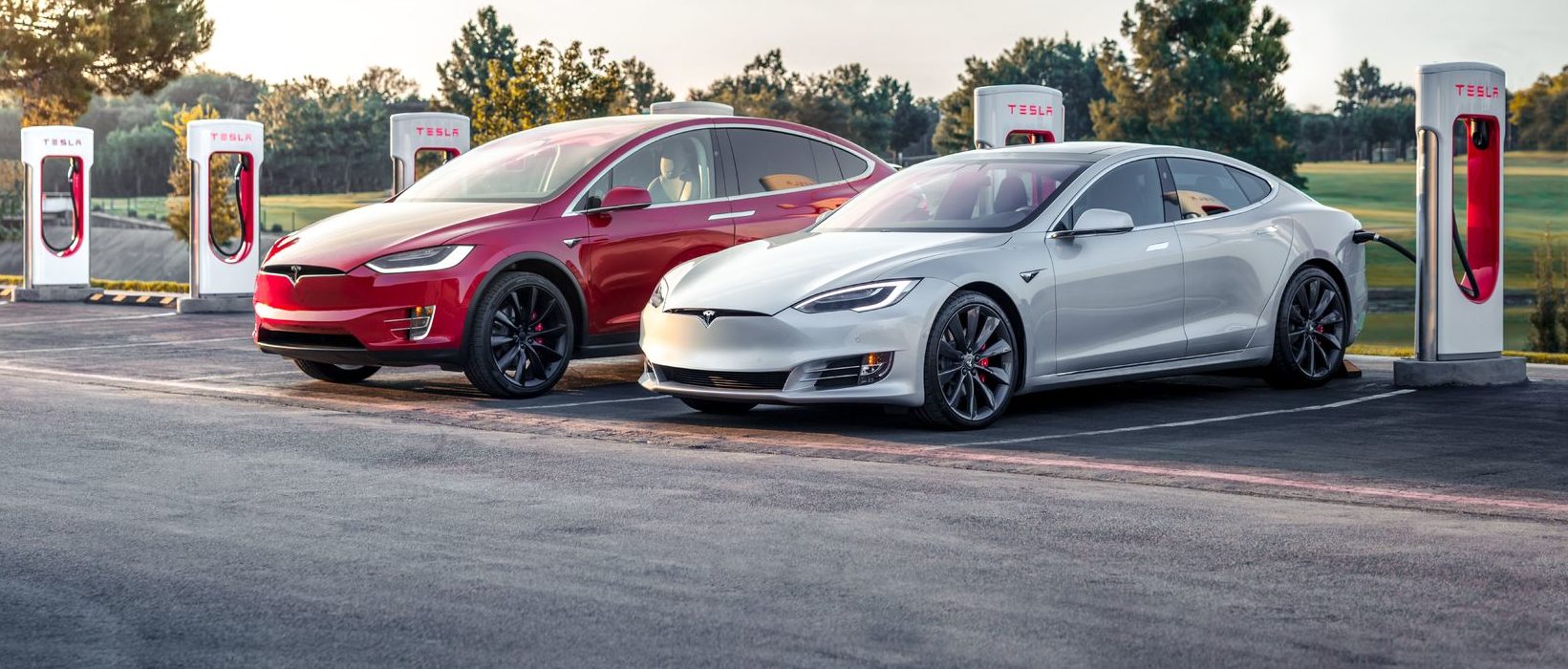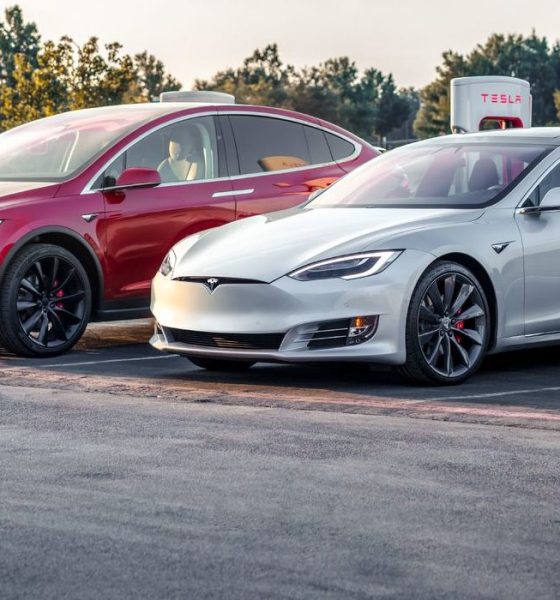

News
Tesla’s Q1 ’21 Deliveries prove Elon Musk was right about the Model S and X in 2019
Tesla released its Production and Delivery figures for the first quarter of 2021 earlier today, and it proved that CEO Elon Musk was right about the Model S and Model X not being crucial to the company’s ultimate long-term growth. During Tesla’s Q3 2019 Earnings Call, New Street Research analyst Pierre Ferragu asked what Musk thought about the S and X moving forward and how Tesla planned to deal with the cannibalizing effects of the Model 3, the car that overtook the popularity of the company’s flagship vehicles.
Referring to the Model S and Model X as “niche products,” Musk always seemed to know that Tesla’s flagship vehicles wouldn’t take the company into “mass-market” growth. “I mean, they’re very expensive, made in low volume. To be totally frank, we’re continuing to make them more for sentimental reasons than anything else. They’re really of minor importance to the future,” Musk said.

He was right. Looking at Tesla’s Q1 2021 delivery figures, there is a simple dash under the Model S and X category. Symbolic of the shutdown S and X production lines that are being retooled at the Fremont factory in preparation for the production of the refreshed vehicles, Tesla only delivered S and X vehicles in the company’s inventory. Despite the absence of 50% of the company’s all-electric models, Tesla reported nearly 100,000 more vehicles in Q1 2021 than it did in Q1 2020, moving from 88,400 to 184,800.
This is where Musk’s outlook becomes incredibly accurate, proving that his 2019 quotation regarding the Model S and Model X’s importance to the future is relatively minuscule. Tesla doesn’t need its two flagship vehicles to grow or sustain demand. The Model 3 and the Model Y do that.
It’s evident that Musk holds high regard for his two flagship vehicles. “They’re great cars. I mean, the Model S literally won MotorTrend’s best car ever in history, by the way. It’s incredible, especially the new one with variable damping suspension, hospital operating room, HEPA filter for air purification, the raven powertrain. It’s the fastest car in the world, and it’s just so easy to drive. It makes you feel like Superman driving that car. It’s incredibly safe. It’s just an amazing vehicle,” Musk said. However, he also realizes that the Model 3 and Model Y are just better vehicles, while the Model S and Model X are “art pieces, basically.”
Tesla has never been about making fancy, amazing, eye-catching vehicles, at least not in the long term. The Model S and Model X were both head-turners: the S, with its sporty look, was not the stereotypical electric car. Musk once said that driving an electric car didn’t have to be a boring, slow, or golf cart-like experience. It was supposed to be fun, fast, exhilarating, and it was (and still is). The X, with its falcon-wing doors and comparable performance to the Model S, only solidified this. But they were ultimately just the bait for the average car buyer. In the mid-2010s, if people saw a Tesla, you can bet their heads gravitated toward it. They were rare, and in some areas, it was probably pretty close to seeing a Lamborghini or a Ferrari for some people.
This was all a part of Musk’s Master Plan. While it describes the capital-raising efforts of the S and X to welcome in a line of affordable vehicles like the 3 and the Y, the Master Plan also involved catching consumers’ attention by offering unbelievable cars that were not powered by gas. The S and X simply opened the doors for the 3 and the Y, eventually opening the doors for another line of even more affordable models.
Musk was always right about the Model S and Model X. They were never going to take Tesla into the stratosphere. They were only going to be the first two steps in the plan that made Tesla the most valuable car company in the world. Without the Model S and Model X, Tesla would be just fine. The company’s Q1 2021 delivery and production figures only solidified the fact that the two flagship vehicles that brought Tesla to its initial popularity were never going to be the vehicles that expanded the movement of electrification, nor made Tesla the household name that it has become in a period of three short years.

Elon Musk
Starlink passes 9 million active customers just weeks after hitting 8 million
The milestone highlights the accelerating growth of Starlink, which has now been adding over 20,000 new users per day.

SpaceX’s Starlink satellite internet service has continued its rapid global expansion, surpassing 9 million active customers just weeks after crossing the 8 million mark.
The milestone highlights the accelerating growth of Starlink, which has now been adding over 20,000 new users per day.
9 million customers
In a post on X, SpaceX stated that Starlink now serves over 9 million active users across 155 countries, territories, and markets. The company reached 8 million customers in early November, meaning it added roughly 1 million subscribers in under seven weeks, or about 21,275 new users on average per day.
“Starlink is connecting more than 9M active customers with high-speed internet across 155 countries, territories, and many other markets,” Starlink wrote in a post on its official X account. SpaceX President Gwynne Shotwell also celebrated the milestone on X. “A huge thank you to all of our customers and congrats to the Starlink team for such an incredible product,” she wrote.
That growth rate reflects both rising demand for broadband in underserved regions and Starlink’s expanding satellite constellation, which now includes more than 9,000 low-Earth-orbit satellites designed to deliver high-speed, low-latency internet worldwide.
Starlink’s momentum
Starlink’s momentum has been building up. SpaceX reported 4.6 million Starlink customers in December 2024, followed by 7 million by August 2025, and 8 million customers in November. Independent data also suggests Starlink usage is rising sharply, with Cloudflare reporting that global web traffic from Starlink users more than doubled in 2025, as noted in an Insider report.
Starlink’s momentum is increasingly tied to SpaceX’s broader financial outlook. Elon Musk has said the satellite network is “by far” the company’s largest revenue driver, and reports suggest SpaceX may be positioning itself for an initial public offering as soon as next year, with valuations estimated as high as $1.5 trillion. Musk has also suggested in the past that Starlink could have its own IPO in the future.
News
NVIDIA Director of Robotics: Tesla FSD v14 is the first AI to pass the “Physical Turing Test”
After testing FSD v14, Fan stated that his experience with FSD felt magical at first, but it soon started to feel like a routine.

NVIDIA Director of Robotics Jim Fan has praised Tesla’s Full Self-Driving (Supervised) v14 as the first AI to pass what he described as a “Physical Turing Test.”
After testing FSD v14, Fan stated that his experience with FSD felt magical at first, but it soon started to feel like a routine. And just like smartphones today, removing it now would “actively hurt.”
Jim Fan’s hands-on FSD v14 impressions
Fan, a leading researcher in embodied AI who is currently solving Physical AI at NVIDIA and spearheading the company’s Project GR00T initiative, noted that he actually was late to the Tesla game. He was, however, one of the first to try out FSD v14.
“I was very late to own a Tesla but among the earliest to try out FSD v14. It’s perhaps the first time I experience an AI that passes the Physical Turing Test: after a long day at work, you press a button, lay back, and couldn’t tell if a neural net or a human drove you home,” Fan wrote in a post on X.
Fan added: “Despite knowing exactly how robot learning works, I still find it magical watching the steering wheel turn by itself. First it feels surreal, next it becomes routine. Then, like the smartphone, taking it away actively hurts. This is how humanity gets rewired and glued to god-like technologies.”
The Physical Turing Test
The original Turing Test was conceived by Alan Turing in 1950, and it was aimed at determining if a machine could exhibit behavior that is equivalent to or indistinguishable from a human. By focusing on text-based conversations, the original Turing Test set a high bar for natural language processing and machine learning.
This test has been passed by today’s large language models. However, the capability to converse in a humanlike manner is a completely different challenge from performing real-world problem-solving or physical interactions. Thus, Fan introduced the Physical Turing Test, which challenges AI systems to demonstrate intelligence through physical actions.
Based on Fan’s comments, Tesla has demonstrated these intelligent physical actions with FSD v14. Elon Musk agreed with the NVIDIA executive, stating in a post on X that with FSD v14, “you can sense the sentience maturing.” Musk also praised Tesla AI, calling it the best “real-world AI” today.
News
Tesla AI team burns the Christmas midnight oil by releasing FSD v14.2.2.1
The update was released just a day after FSD v14.2.2 started rolling out to customers.

Tesla is burning the midnight oil this Christmas, with the Tesla AI team quietly rolling out Full Self-Driving (Supervised) v14.2.2.1 just a day after FSD v14.2.2 started rolling out to customers.
Tesla owner shares insights on FSD v14.2.2.1
Longtime Tesla owner and FSD tester @BLKMDL3 shared some insights following several drives with FSD v14.2.2.1 in rainy Los Angeles conditions with standing water and faded lane lines. He reported zero steering hesitation or stutter, confident lane changes, and maneuvers executed with precision that evoked the performance of Tesla’s driverless Robotaxis in Austin.
Parking performance impressed, with most spots nailed perfectly, including tight, sharp turns, in single attempts without shaky steering. One minor offset happened only due to another vehicle that was parked over the line, which FSD accommodated by a few extra inches. In rain that typically erases road markings, FSD visualized lanes and turn lines better than humans, positioning itself flawlessly when entering new streets as well.
“Took it up a dark, wet, and twisty canyon road up and down the hill tonight and it went very well as to be expected. Stayed centered in the lane, kept speed well and gives a confidence inspiring steering feel where it handles these curvy roads better than the majority of human drivers,” the Tesla owner wrote in a post on X.
Tesla’s FSD v14.2.2 update
Just a day before FSD v14.2.2.1’s release, Tesla rolled out FSD v14.2.2, which was focused on smoother real-world performance, better obstacle awareness, and precise end-of-trip routing. According to the update’s release notes, FSD v14.2.2 upgrades the vision encoder neural network with higher resolution features, enhancing detection of emergency vehicles, road obstacles, and human gestures.
New Arrival Options also allowed users to select preferred drop-off styles, such as Parking Lot, Street, Driveway, Parking Garage, or Curbside, with the navigation pin automatically adjusting to the ideal spot. Other refinements include pulling over for emergency vehicles, real-time vision-based detours for blocked roads, improved gate and debris handling, and Speed Profiles for customized driving styles.








